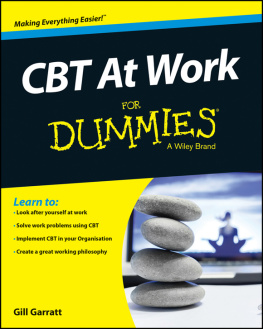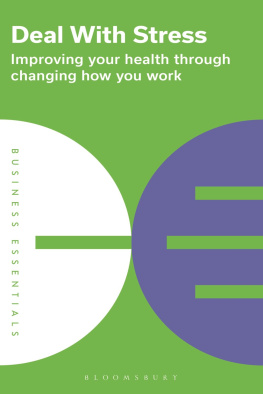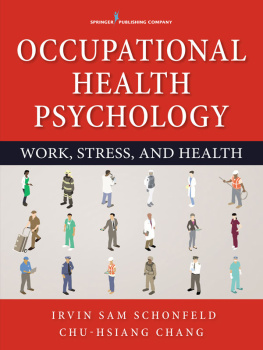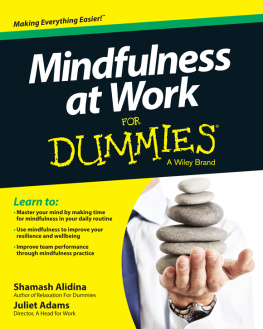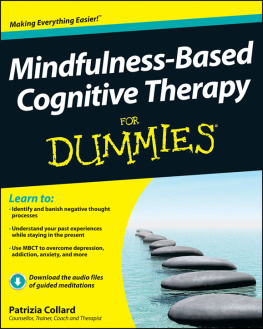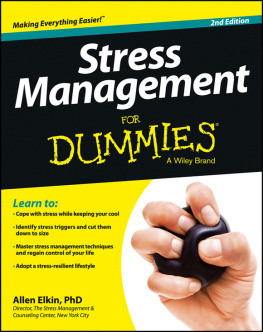
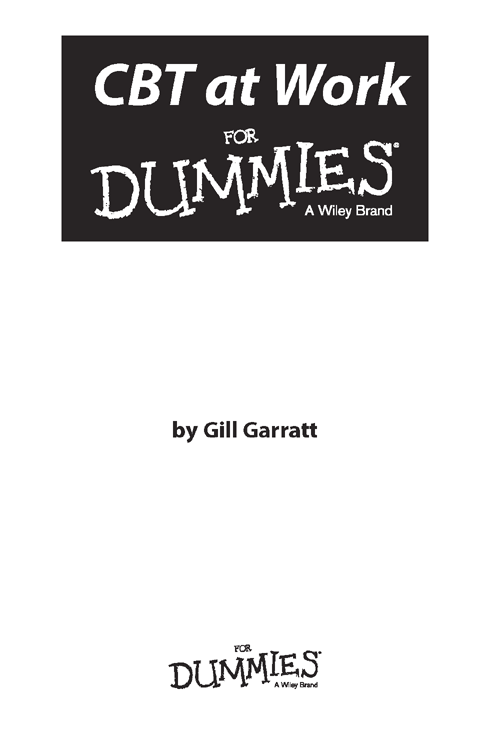
CBT at Work For Dummies
Published by: John Wiley & Sons, Ltd., The Atrium, Southern Gate, Chichester, www.wiley.com
This edition first published 2016
2016 John Wiley & Sons, Ltd., Chichester, West Sussex.
Registered office
John Wiley & Sons Ltd., The Atrium, Southern Gate, Chichester, West Sussex, PO19 8SQ, United Kingdom
For details of our global editorial offices, for customer services and for information about how to apply for permission to reuse the copyright material in this book, please see our website at www.wiley.com .
The right of the author to be identified as the author of this work has been asserted in accordance with the Copyright, Designs and Patents Act 1988.
All rights reserved. No part of this publication may be reproduced, stored in a retrieval system, or transmitted, in any form or by any means, electronic, mechanical, photocopying, recording or otherwise, except as permitted by the UK Copyright, Designs and Patents Act 1988, without the prior permission of the publisher.
Wiley publishes in a variety of print and electronic formats and by print-on-demand. Some material included with standard print versions of this book may not be included in e-books or in print-on-demand. If this book refers to media such as a CD or DVD that is not included in the version you purchased, you may download this material at http://booksupport.wiley.com . For more information about Wiley products, visit www.wiley.com .
Designations used by companies to distinguish their products are often claimed as trademarks. All brand names and product names used in this book are trade names, service marks, trademarks or registered trademarks of their respective owners. The publisher is not associated with any product or vendor mentioned in this book.
LIMIT OF LIABILITY/DISCLAIMER OF WARRANTY: WHILE THE PUBLISHER AND AUTHOR HAVE USED THEIR BEST EFFORTS IN PREPARING THIS BOOK, THEY MAKE NO REPRESENTATIONS OR WARRANTIES WITH THE RESPECT TO THE ACCURACY OR COMPLETENESS OF THE CONTENTS OF THIS BOOK AND SPECIFICALLY DISCLAIM ANY IMPLIED WARRANTIES OF MERCHANTABILITY OR FITNESS FOR A PARTICULAR PURPOSE. IT IS SOLD ON THE UNDERSTANDING THAT THE PUBLISHER IS NOT ENGAGED IN RENDERING PROFESSIONAL SERVICES AND NEITHER THE PUBLISHER NOR THE AUTHOR SHALL BE LIABLE FOR DAMAGES ARISING HEREFROM. IF PROFESSIONAL ADVICE OR OTHER EXPERT ASSISTANCE IS REQUIRED, THE SERVICES OF A COMPETENT PROFESSIONAL SHOULD BE SOUGHT.
For general information on our other products and services, please contact our Customer Care Department within the U.S. at 877-762-2974, outside the U.S. at (001) 317-572-3993, or fax 317-572-4002. For technical support, please visit www.wiley.com/techsupport .
For technical support, please visit www.wiley.com/techsupport .
A catalogue record for this book is available from the British Library.
ISBN 978-1-119-06738-2 (hardback/paperback); ISBN ePDF: 978-1-119-06736-8 (ePDF)
ISBN 978-1-119-06737-5 (ebk)
CBT at Work For Dummies
Visit www.dummies.com/cheatsheets/cbtatwork to view this book's cheat sheet.
- Table of Contents
Guide
Pages
Introduction
Cognitive Behavioural Therapy, or CBT, is a type of practical helping strategy based upon years of research in the world of psychology. In the search for greater understanding of how you think and behave, CBT has developed into a popular helping tool. Since the early days of Freud and his ideas on the human mind and the many other theories and therapies that have followed, trying to get a clearer picture of the emotional roller coaster of life continues to be a popular topic. CBT seems to appeal to many people both in medical and personal settings. Personal development books rank very highly and continue to be popular. Is this because you are interested in trying to work out what is going on in your head? You may want to find out why you make the decisions you do about life, relationships, and in particular what is going on at work. You spend so much time during your working life dealing with people, issues, events, and interactions and at times you can find yourself struggling to get to grips with all of this. Is it any wonder that you may feel at times that you want to try to stand back and make some sense of it all?
CBT can help you identify what emotions are bubbling up inside you and teach you some practical strategies to help you reduce the negative ones that you could do without. You can apply CBT any time, in any situation that sends you into a spin, but in particular, this book uses examples in the work situation to help you pinpoint common examples of work life imbalances.
Whenever you are feeling worried or anxious about work, you could say its the warning light that you may want to do something about it to try to reduce the uneasy feelings. You are the only one who really knows how you are feeling. This book gives you an introduction to the ideas of CBT, and explains the practical strategies you can apply to reduce anxieties. There is some of the theory behind CBT included too, to help you put into perspective what makes it stand out from other therapies. You may also want to work with your medical professionals, perhaps a psychotherapist as well at times, but this book will guide you to making choices which are in your best interest.
In all the working situations I have come across in the different jobs I have done, including manufacturing work, education, sales, global financial organisations, central government, prisons, leisure industry and cruise ship lecturing, I found similar problems and difficulties. I encountered problems and emotional upsets both in my own working life and as a psychotherapist working for an international employee assistance H.R. company. All the examples are based on real-life scenarios, across a wide range of employment situations.
I worked for a year in California on a job exchange and first encountered being helped by an Employee Assistance Programme whilst working there. I returned to the UK and decided I would like to train to be able to work as a Stress Manager and apply the U.S.A. experience to my work as a psychologist in the UK. That was in 1989. Our group was the first to train in a new type of cognitive therapy. Since then, I have used CBT in my work both personally and professionally. This book is the result of wanting to share what I have learnt with as many people as possible, who also find work a struggle sometimes. I know that CBT can be helpful. I have learned this from all the hundreds of clients I have worked with, seeing them work through the difficult times and from the feedback they give saying how useful the CBT has been. I wish CBT had been around when I was in the early years of my career; I would have spent far less time agonising over work problems and decisions, insecurities and sleepless nights. If only I could have applied some CBT to my irrational thinking and understood that worrying and making myself anxious and upset was not going to help. CBT does not suggest that you dont care about life and work, and become some emotionless automaton. CBT helps you to work out your unhealthy negative thinking and change it to a healthy concern that makes a good nights sleep more of a possibility and your work life and career a calmer and rewarding path.
Once you have learned some CBT, you will have that knowledge and a toolkit to apply whenever you start to feel uneasy.
Next page
